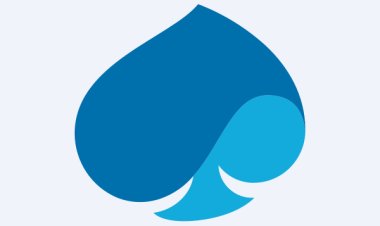From Scratch to Python: Best Programming Languages for Kids to Learn First
In today’s digital world, coding has become an essential skill for children. Learning to code not only introduces them to technology but also enhances problem-solving, logical thinking, and creativity. With the right programming language, kids can build games, apps, animations, and even basic AI models. But with so many options available, how do you decide which language your child should start with?
Share this Post to earn Money ( Upto ₹100 per 1000 Views )
In today’s digital world, coding has become an essential skill for children. Learning to code not only introduces them to technology but also enhances problem-solving, logical thinking, and creativity. With the right programming language, kids can build games, apps, animations, and even basic AI models. But with so many options available, how do you decide which language your child should start with?
The best programming languages for kids should be engaging, easy to learn, and designed for beginners. Whether your child is a complete novice or has dabbled in coding before, starting with the right language is crucial. In this blog, we’ll explore the top programming languages for kids and why they make great choices for young learners.
Scratch: The Perfect Beginner’s Language
Scratch is one of the most popular programming languages for kids, designed specifically to introduce them to coding in a fun and visual way. Instead of typing lines of code, kids use colorful drag-and-drop blocks to create animations, interactive stories, and simple games. This approach removes the complexity of syntax errors and allows children to focus on logic and creativity.
Another major advantage of Scratch is its large online community. Kids can share their projects, get feedback, and learn from others worldwide. Since Scratch is web-based, it’s accessible from any device, making it a great starting point for young learners who are new to programming.
Blockly: A Step Toward Text-Based Coding
Blockly is similar to Scratch but serves as a bridge between block-based and text-based coding. It uses a visual interface with blocks representing real JavaScript, Python, or other programming commands. As kids arrange blocks to create programs, they simultaneously see the equivalent text-based code, helping them transition to traditional coding languages.
This gradual introduction makes Blockly an excellent choice for kids who are ready to move beyond Scratch but may not yet be comfortable typing complex code. Since it integrates with other platforms like App Inventor and robotics kits, Blockly provides a seamless progression into more advanced coding concepts.
Python: A Kid-Friendly Programming Language
Python is one of the best text-based programming languages for kids. It is widely used in professional software development, data science, and AI, yet its simple and readable syntax makes it beginner-friendly. Unlike languages that require extensive punctuation and formatting, Python’s clean structure allows kids to focus on logic rather than technical details.
Kids can use Python to create games, animations, and even simple artificial intelligence projects. Since Python is a real-world language, learning it at an early age gives children a strong foundation for future careers in programming. It’s also commonly taught in coding classes for kids, making it a great step up from block-based coding.
JavaScript: Bringing Websites to Life
JavaScript is the language of the web, making it a fantastic choice for kids interested in building websites, interactive apps, and browser-based games. Since most modern websites rely on JavaScript, kids can see their code in action almost instantly, making learning highly engaging.
Unlike Scratch or Blockly, JavaScript requires more attention to syntax, but it remains relatively easy to learn with the right guidance. Many beginner-friendly coding platforms provide interactive tutorials to help kids get started. Mastering JavaScript at an early age can open doors to web development and game design in the future.
Lua: The Language Behind Popular Games
Lua is a lightweight scripting language often used in game development. It is the programming language behind Roblox, one of the most popular platforms for kids. Learning Lua allows children to create their own game experiences, modify existing games, and explore the fundamentals of coding in a fun environment.
Unlike more complex languages, Lua has a simple syntax that makes it easy for beginners to pick up. Since it’s commonly used in game engines like Roblox Studio and Corona SDK, learning Lua can inspire kids to pursue careers in game development while keeping them engaged in coding.
Swift: Ideal for Young App Developers
Swift is Apple’s programming language designed for developing iOS apps. It’s beginner-friendly, offering an interactive coding environment called Swift Playgrounds, where kids can experiment with coding concepts through fun challenges and animations.
For children who use iPads or iPhones, learning Swift can be particularly exciting, as they can build their own apps for Apple devices. Although Swift is more advanced than block-based languages, its structured learning path makes it accessible for young learners ready to dive into app development.
Ruby: Simple Yet Powerful
Ruby is another excellent programming language for kids due to its simplicity and readability. It has an intuitive syntax that closely resembles everyday language, making it easier to understand compared to more complex programming languages.
One of the biggest advantages of Ruby is its use in real-world applications, including web development and automation. Learning Ruby at a young age can help kids develop strong problem-solving skills and prepare them for more advanced programming in the future.
C++: The Foundation of Game Development
C++ is one of the most powerful programming languages, widely used in video game development, robotics, and software engineering. While it is more complex than Scratch or Python, kids who have mastered beginner languages may enjoy the challenge of learning C++.
Many popular video games, including Minecraft and Fortnite, use C++, making it an appealing choice for kids interested in game development. However, due to its advanced nature, C++ is best suited for older children who already have some coding experience.
Go Beyond Coding: Choosing the Right Learning Environment
While selecting the best programming language is important, the learning environment plays an equally crucial role. Interactive platforms, coding camps, and structured lessons help keep kids engaged and motivated. Many parents are now opting for online coding classes for kids, which offer flexibility and personalized instruction tailored to a child’s skill level.
Online courses provide access to expert instructors, live coding challenges, and interactive projects. Whether your child wants to build games, create apps, or explore AI, online learning platforms offer a variety of options to suit their interests. Combining the right language with the right resources ensures a fun and effective learning experience.
Conclusion
Introducing kids to coding at an early age opens up endless possibilities for their future. Starting with beginner-friendly languages like Scratch and Blockly allows them to develop confidence, while moving on to Python, JavaScript, or Lua gives them real-world programming skills.
By selecting the right programming language based on their interests and skill level, kids can enjoy a smooth and engaging learning journey. As technology continues to evolve, mastering coding from an early age will equip them with essential skills for the future, whether in web development, game design, or artificial intelligence.

















